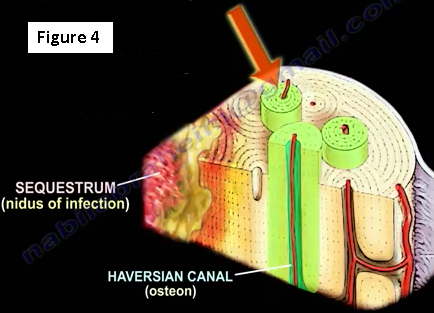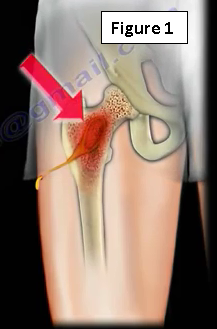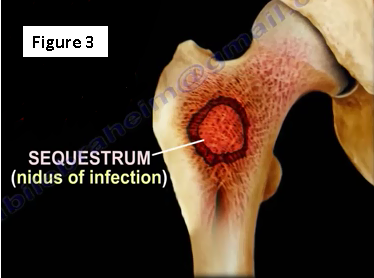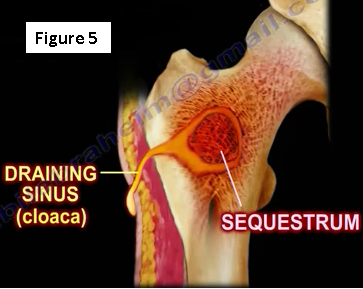Chronic osteomyelitis is an infection in the bone, which can be an incurable problem (Figure 1).
What happens when the bone gets infection (osteomyelitis)?
Usually bacteria causes infection in the bone. Leukocytes are attracted to the area and secrete enzymes in attempt to kill the bacteria (Figure 2). Leukocytes are normal white blood cells that defend the body against any outside invaders.
Blood flow to the area is decreased, and devitalized necrotic bone is formed called a sequestrum (Figure 3). That sequestrum is an infected dead bone resulting from osteomyelitis. It is a nidus of infection. Haversian canals surround blood vessels and nerve cells throughout the bone, and give nutrition to the bone (Figure 4). The sequestrum has no connection to the normal bone through the Haversian system, (osteon) or the connection with the healthy bone is severed.

Due to the avascular nature of the sequestrum, antibiotics cannot reach the sequestrum or the bacteria. In fact, the bacteria enters the sequestrum's bone cells and hides inside them, antibiotics alone are not helpful. The involucrum is a new bone formation around the sequestrum. The body is trying to seal off the infection by forming new bone. The sequestrum will drain through the sinus (Figure 5). That draining sinus is called the cloaca.
A culture of the surface of the sinus is not representative of what is deep. Multiple, deep samples are needed. Biopsy of the sinus is important in long standing cases of osteomyelitis in order to rule out squamous cell sarcoma.
Principles of Surgical Treatment for Osteomyelitis
Adequate debridement of all infected tissue, include bone is critical. Multiple debridements may be necessary. The sequestrum has to be removed. The sequestrum is almost like a dead fish in a clean pond, you have to get it out! The infected tissue around it has to be sterilized. Make sure a pathological fracture isn't created. Stabilize if needed, usually an external fixator is preferred. If a cavity is created after a debridement, the cavity is filled with bone chips, cement or a muscle flap, if necessary. Antibiotics are usually prescribed for 6 weeks (organism specific). The recurrence of infection could be as high as 30% (Figure 6).




